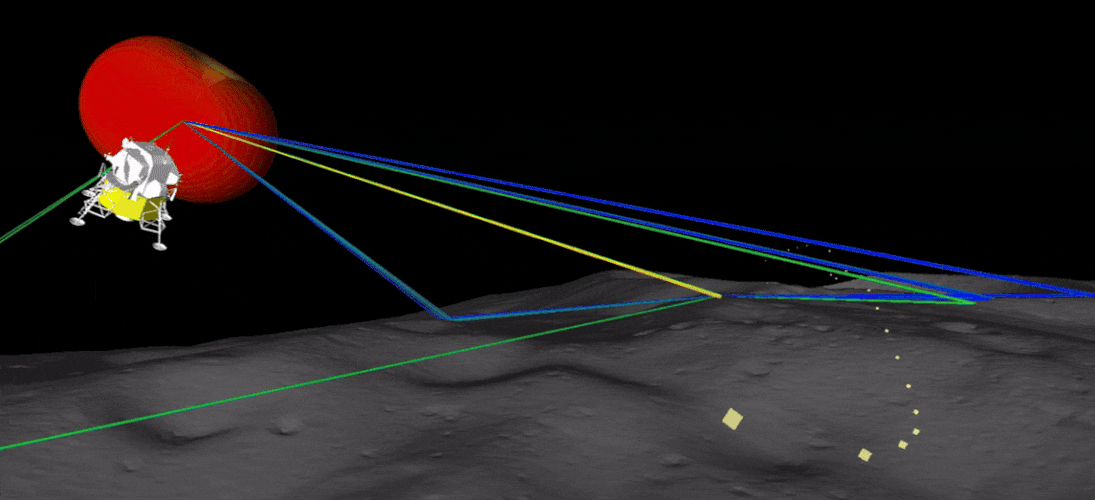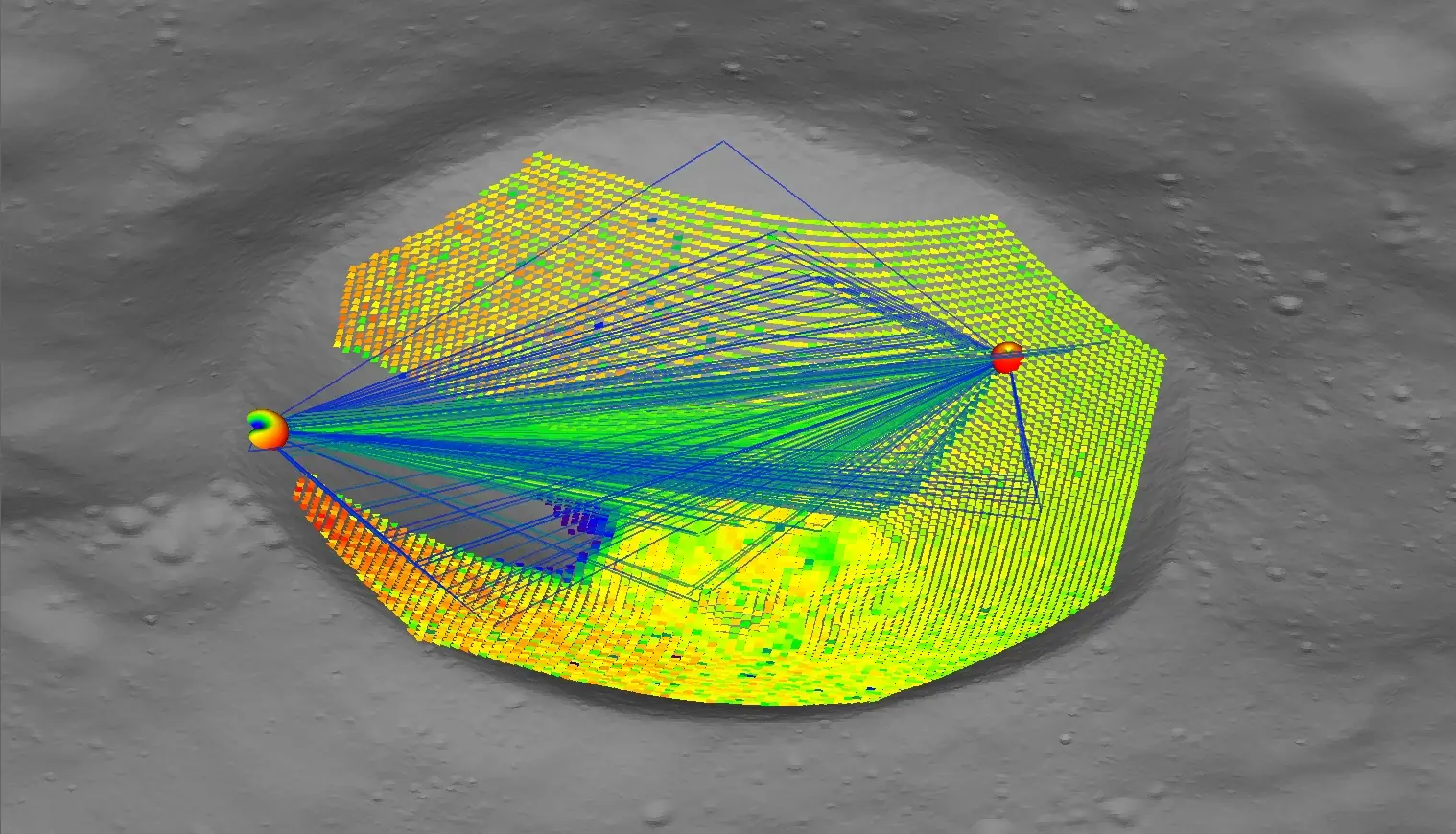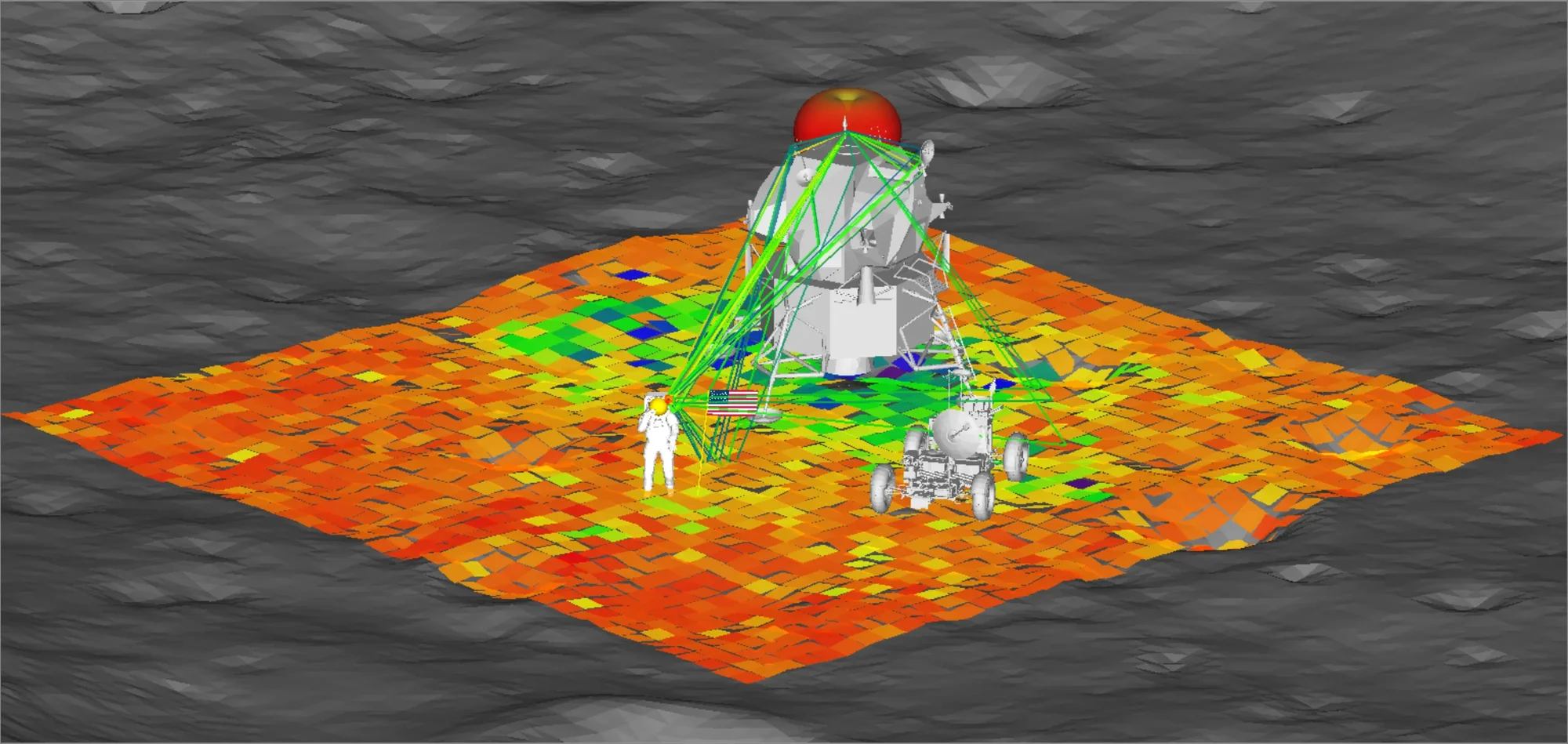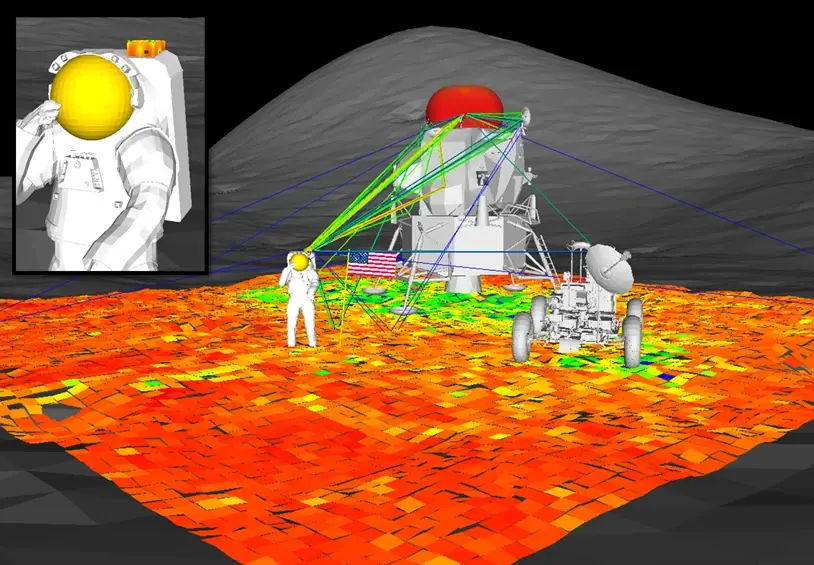Lunar Wireless Channel Simulations
Remcom partners with NASA to simulate wireless links on the Moon. Model antenna performance, coverage, and signal behavior in extreme lunar conditions.
Remcom’s simulation solutions enable engineers to model signal behavior across lunar terrain, on-body antennas, and complex spacesuit materials—creating reliable predictions of RF propagation in the lunar environment.

Predicting Wireless Communications on the Moon with Remcom's NASA-Trusted Tools
Remcom collaborates with NASA to simulate wireless communication challenges on the Moon, advancing capabilities for Artemis missions that demand robust, continuous communication for astronauts operating in this challenging landscape. These links—whether between habitats, rovers, landers, or wearable devices—must function reliably in a highly irregular environment.
To meet this need, Remcom’s Wireless InSite software is being enhanced to account for:
- The unique electrical and structural properties of lunar regolith and bedrock
- Scattering effects caused by crater topology and surface roughness
- Multipath propagation and Doppler effects in non-terrestrial environments
- Coverage planning for 4G/5G and Wi-Fi systems under LunaNet architecture

On-Body and Spacesuit-Mounted Antenna Simulations
Antennas mounted on modern spacesuits pose novel electromagnetic challenges due to complex multi-layer materials and body interactions. Remcom has developed simulation enhancements using Huygens surfaces to account for:
- Near-field and far-field behavior in dynamic astronaut motion scenarios
- Device-to-device (D2D) communication via sidelink protocols
- Relay-based coverage when astronauts move out of direct line-of-sight
- Performance trade-offs for alternative antenna placement and configurations
![]() Faster Simulation. Accurate Results. Mission-Ready Tools.
Faster Simulation. Accurate Results. Mission-Ready Tools.
Simulation speed is essential for engineering agility. Novel enhancements significantly reduce simulation runtimes by one to two orders of magnitude, making it feasible to analyze large-scale, dynamic scenarios within practical design timelines.
- Simulate and compare antenna placements in minutes
- Analyze the effect of motion and terrain on signal loss and delay spread
- Integrate simulation results into emulators for system-level hardware testing


 Faster Simulation. Accurate Results. Mission-Ready Tools.
Faster Simulation. Accurate Results. Mission-Ready Tools.